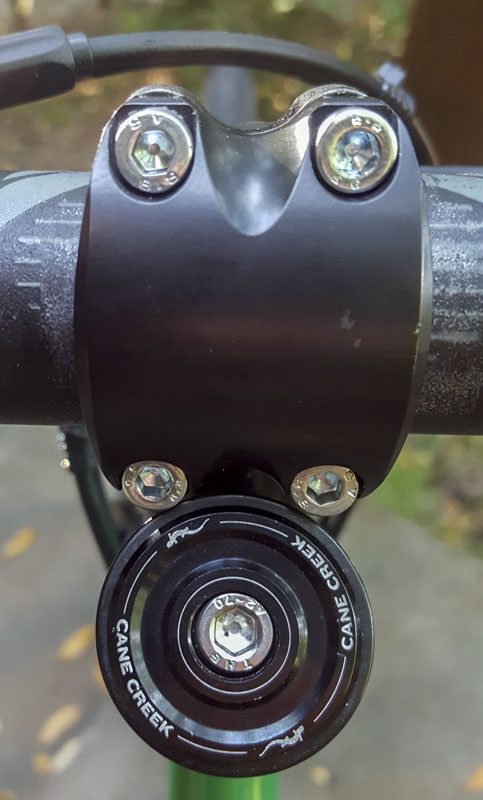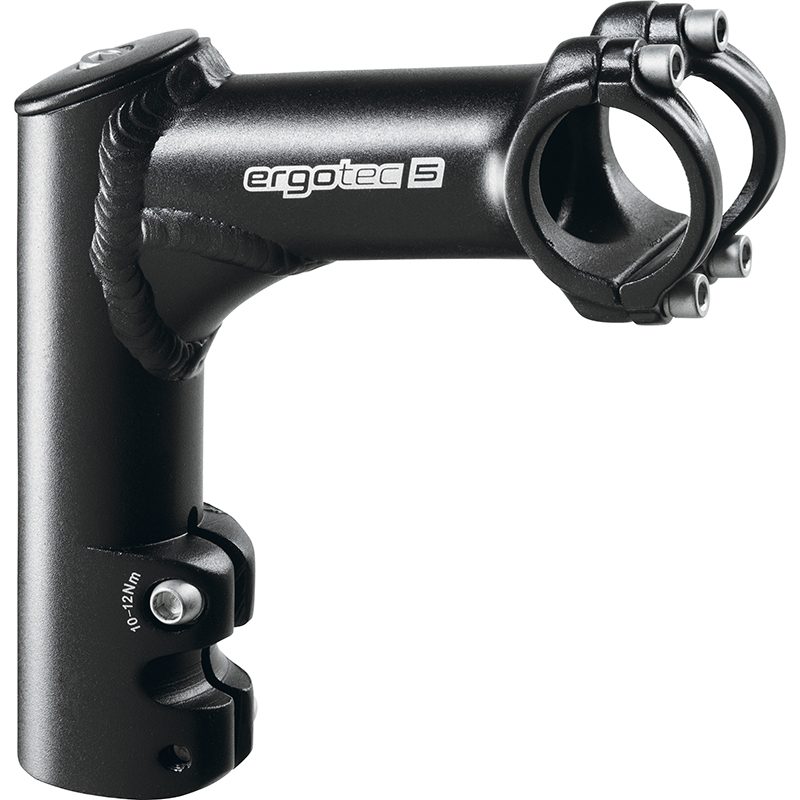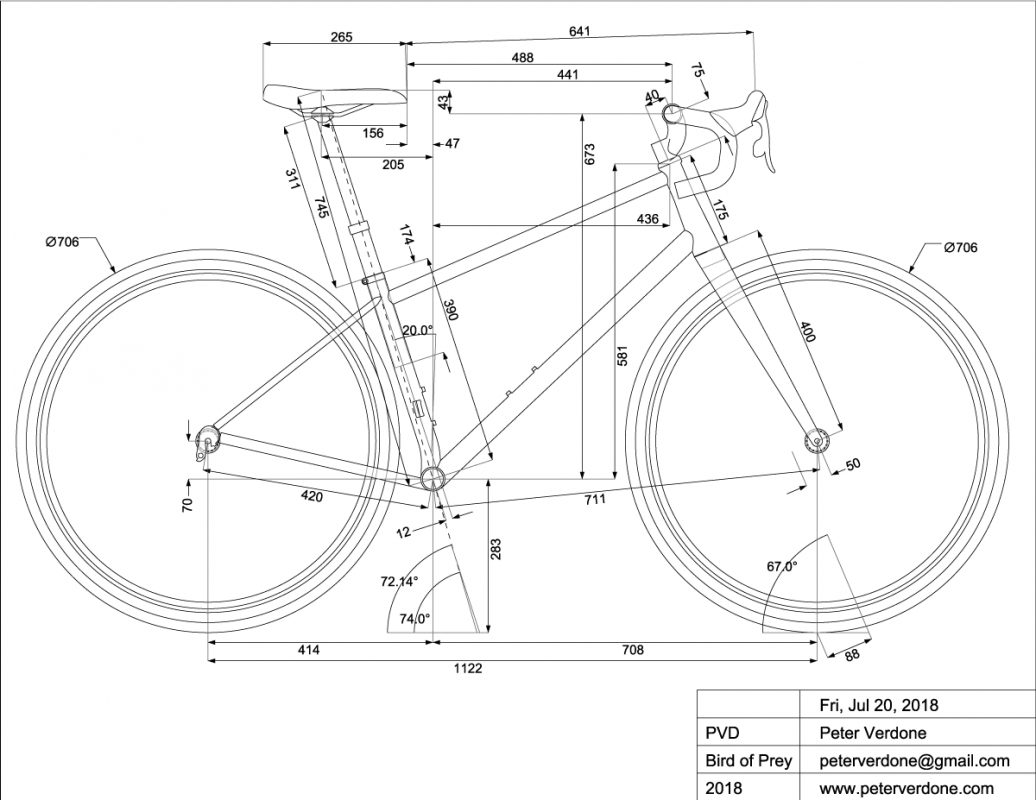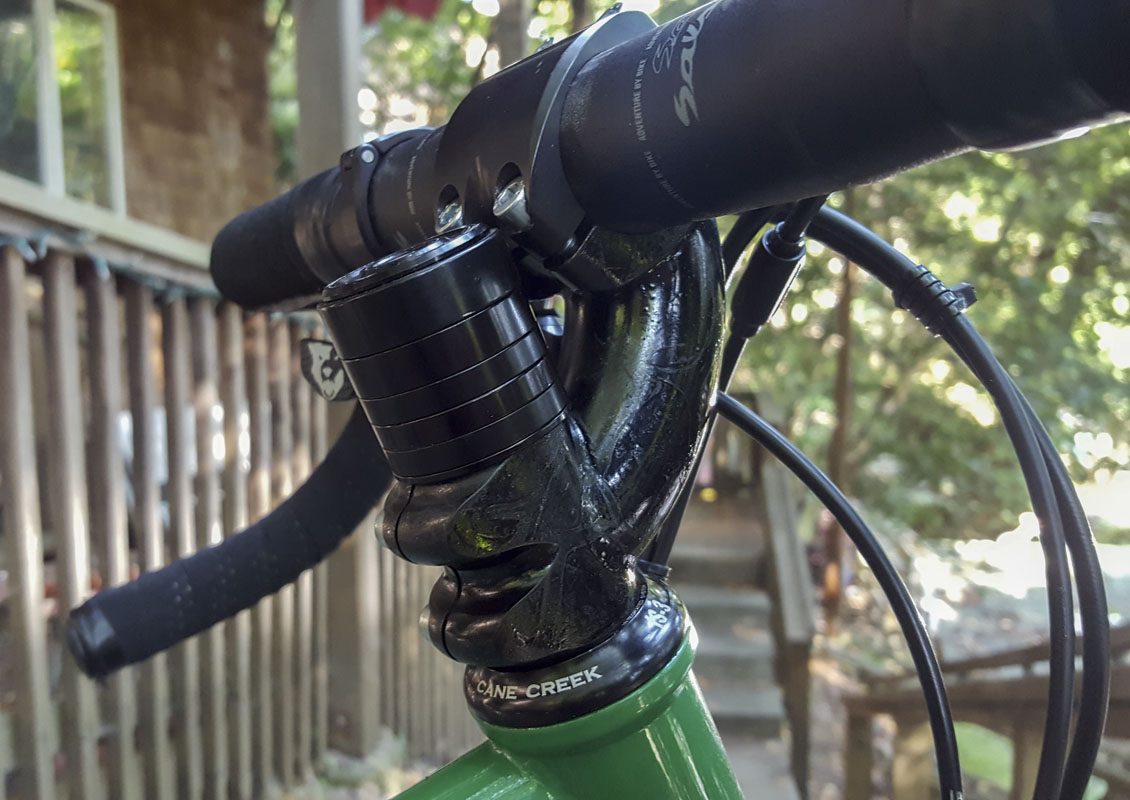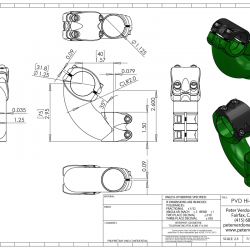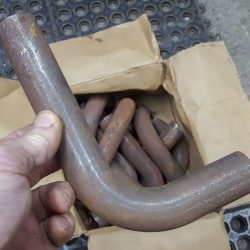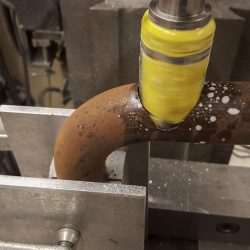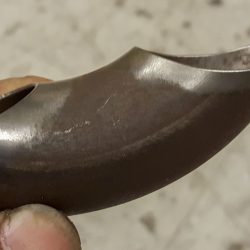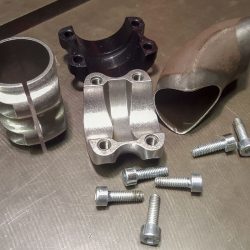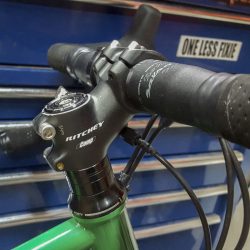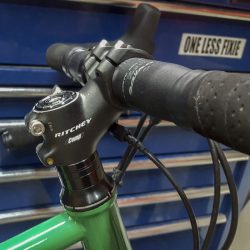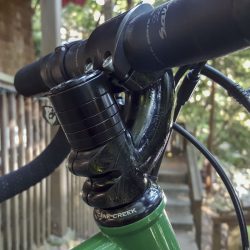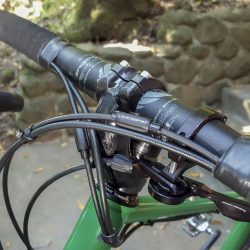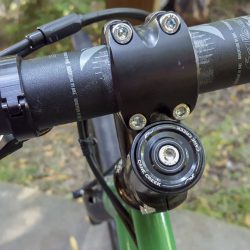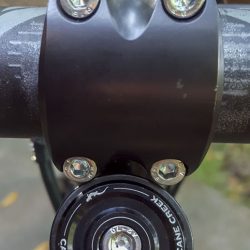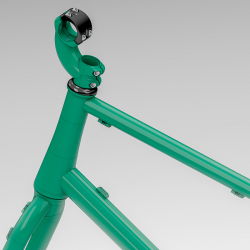The general rule in the machine shop is to never make when you can buy. With some exceptions, you’re usually doing yourself a huge disservice by choosing to make something that is otherwise available commercially at reasonable prices. There are some exceptions to this but often you’ll end up spending more money than it would have cost you to buy. There are engineering considerations that a commercial product has implemented that you don’t know about…yet. Your’s will often not look or work as well as the product that someone else has made their job to produce. This is a good rule to follow. Just know when to break it and why.
I try to design bikes around commercially available stems. Stems are cheap and available in tons of different sizes. Producing a bike frame around an exotic custom stem puts the end user in the difficult situation any time they want or need to change their hand position. That happens often for folks that really work on fit and handling.
This is exactly how not to make a stem. Who approved this mess? And with 3d forging?! WTF. Desgin, and bike design especially, should never be disgusting. A bike should always look sexy, fast, and most importantly work as well as possible in a variety of setups.
Worse, many novice technicians believe that stacking several inches of spacer under a stem is acceptable in a high end construction. It’s absolutely not. Aside from the obvious mechanical issue with the headset function, it’s simply armature and gross.
I believe in Pythagoras, not god. I also believe in a bike that works well in use. This means that the top tube is low and out of the way and there isn’t a stem sticking out where a knee could otherwise go. Many people don’t ride in a way that finds these limits. I do. Faster folk do.
The current problem in design has been with “all-road” bikes. Moving to modern forward geometry principles in this realm is challenging the way handlebars are held. Quality, well designed bi-plane type drop bars need to enter the aftermarket. As they haven’t, we’ve got to do some silly things. It’s a disaster that most of the industry doesn’t recognize what these types of bars do.
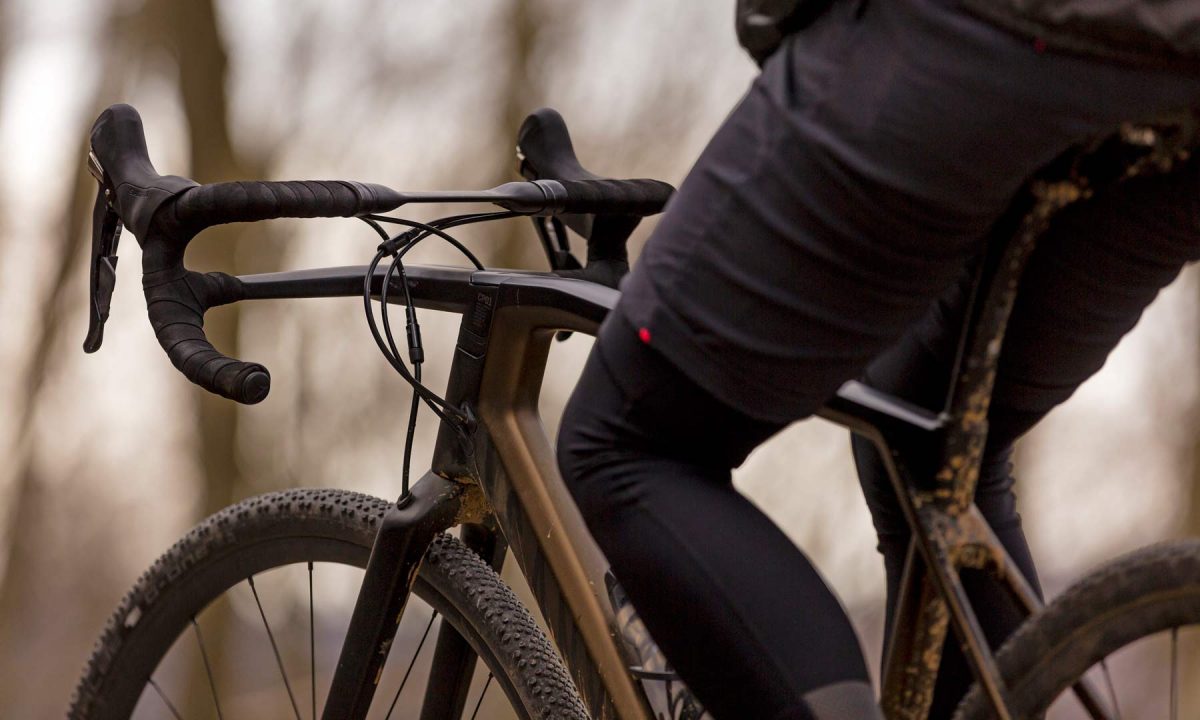
I’m tempted to buy a set of Carbon Cowbell handlebars and fabricate a cross bar to hold the bars as I like. I’m not an authority on this kind of carbon modification.
So, I pushed things pretty hard in the last all-road build. The riding position is good enough with the Ritchey +30x60mm stem and a stack of spacers but I can’t stand stacks of spacers and I wanted to try a slightly shorter cockpit and use a little more rise. Lately, I’ve been looking for more of an “old man” fit and comfort has been driving me as much as performance. Well, nothing is available that does this…and it’s not easy to make. The good thing, not easy is my specialty.
I’ve made plenty of stems in my day. Some basic, some fancy. This one is pretty wild. It took a bit of CAD work to figure this out but I got it. Certainly, doing this in a clumsy manner would be easy. Doing it clean and tidy is not. Not many folks can make a stem like this so you don’t see it often.
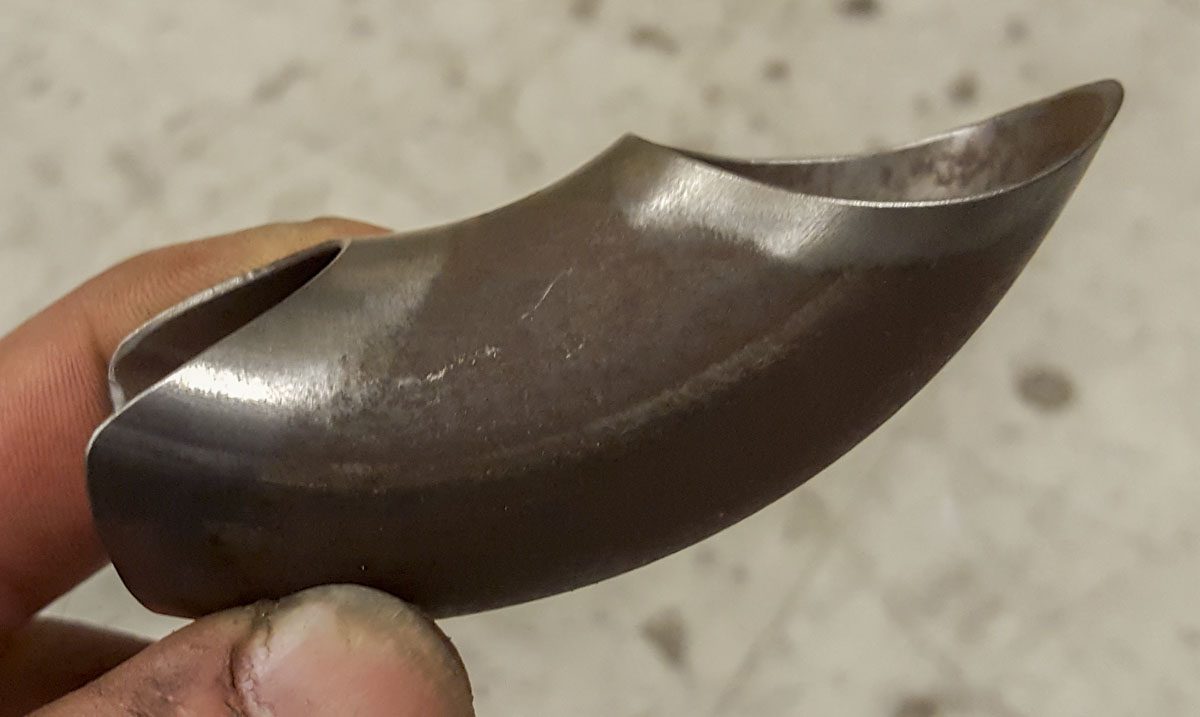
The heart of the stem is the 1.25″x0.035″ tube bent 90 degrees about a 2.0″ CLR. That’s insane. This is literally at the fringe of what is possible with large scale mandrel bending. I had these bent for me about 10 years ago. I haven’t used one in about as long.
In the end, it’s a 40x75mm stem. That’s a great way to measure stems as it tells you the important measures. It’s 55 degree x 69mm by commercial measures.
Sadly, I had a family issue come up that forced me to bag the stem with rattle-can paint about 60% dry to bring home. This primarily to keep rust at bay and have the stem look decent until it can get properly powder coated. Thus, it’s not super bling or pretty as shown here. It will pop when painted the matching green of the frame.
Things would also look a bit cleaner if I chopped down the steerer a bit but I’m not really ready for that at this point in development…obviously.
 Some folks question the shape of this stem but sense can be made by looking at the stem within the context of the frameset and bike. With this stem in it’s lowest placement and 8mm upper headset, a handlebar reach of 441mm and handlebar stack of 673mm. A pretty nice starting point for this all-road bike and my 5’10” height. Not many other solutions exist that do what this has done.
Some folks question the shape of this stem but sense can be made by looking at the stem within the context of the frameset and bike. With this stem in it’s lowest placement and 8mm upper headset, a handlebar reach of 441mm and handlebar stack of 673mm. A pretty nice starting point for this all-road bike and my 5’10” height. Not many other solutions exist that do what this has done.
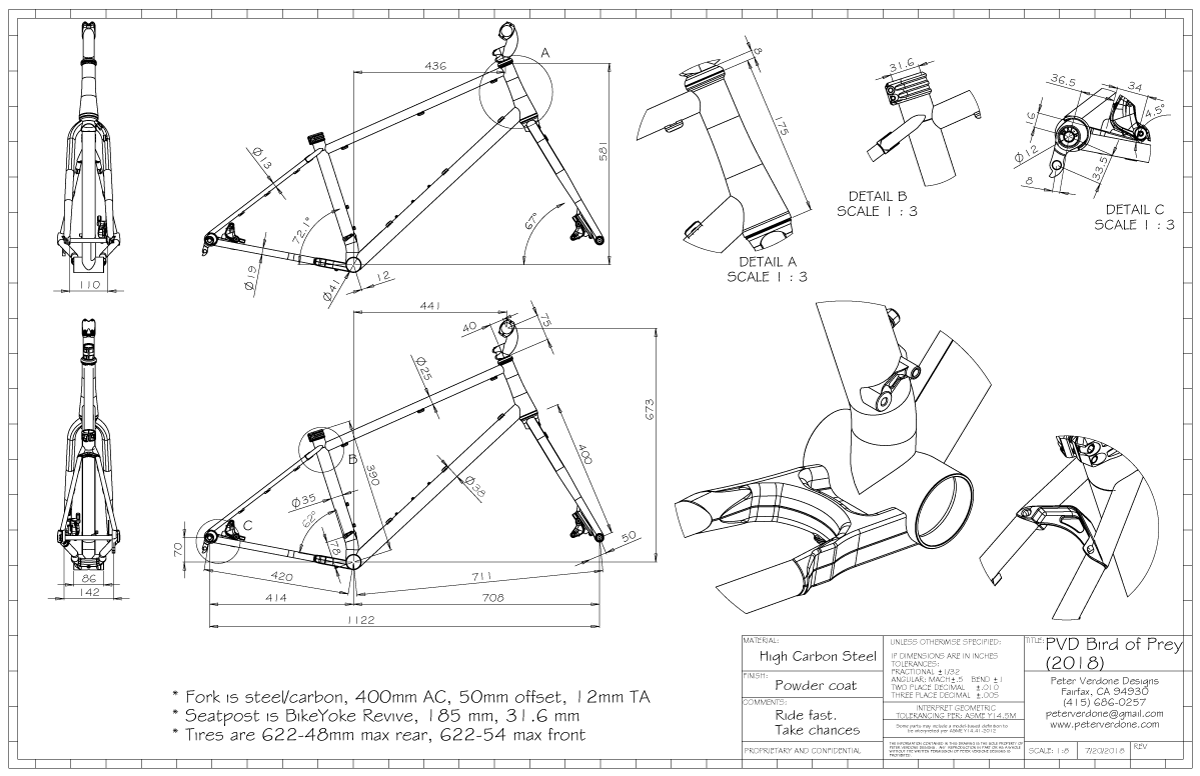
After this next week or so of testing with the new stem geometry and drop bars, I switch over to flat bars to push the carbon and steel forks closer to their limits and the bike itself on very rough terrain. This means more singletrack and faster doubletrack. This will also give me a chance to try a 1×12 drivetrain on the bike. 500% is a bit lower range than 640% but I’ll look to make the best of it. I’ll probably end up with a 38t (or 40t) chainring, giving up a tiny bit of the cozy low end I’ve been liking. Certainly, going to 1x won’t be as glassy to pedal as the 2x setup is.


